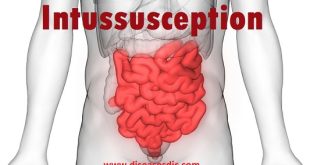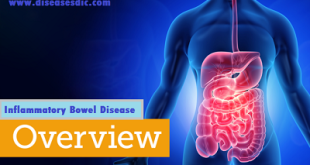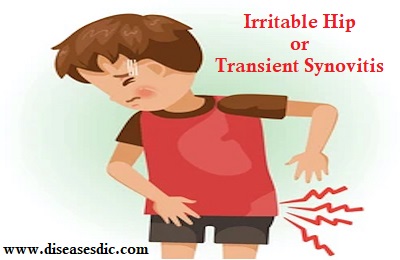Interstitial Lung Disease (ILD) – Description
Interstitial lung disease is a general category that includes many different lung conditions. All interstitial lung diseases affect the interstitium, a part of the lungs’ anatomic structure. The interstitium is a lace-like network of tissue that extends throughout both lungs. The interstitium provides support to the lungs’ microscopic air sacs (alveoli). Tiny blood vessels travel through the interstitium, allowing gas exchange between blood and the air in the lungs. Normally, the interstitium is so thin it can’t be seen on chest X-rays or CT scans.
Types
There are many types of interstitial lung disease, all affecting the interstitium, which is the network of tissue running through both lungs. The interstitium supports the alveoli or tiny air sacs in the lungs. Blood vessels flow through the interstitium, allowing the blood to receive oxygen and get rid of excess carbon dioxide.
Disorders that affect the interstitium thicken its tissues by scarring, inflammation and fluid retention. This thickening makes it difficult for the blood to absorb oxygen, which can lead to the symptoms of interstitial lung disease, such as breathlessness.
According to the American Thoracic Society, there are more than 200 different lung disorders that affect the interstitium. Some of these disorders include:
- Chronic silicosis: A lung disease usually linked to a person’s employment and caused by breathing in too much silica dust.
- Interstitial pneumonia: A lung infection occurring within the interstitium.
- Coal worker’s pneumoconiosis: Also called black lung, this is a lung disorder caused by inhaling coal dust.
- Idiopathic pulmonary fibrosis: Chronic scarring in the interstitium with no known cause.
- Siderosis: Inflammation or scar tissue from inhaling iron from welding or mining.
- Nonspecific interstitial pneumonitis: Damage to the interstitium that often occurs with autoimmune conditions, such as scleroderma or rheumatoid arthritis.
- Hypersensitivity pneumonitis: Inflammation due to inhaling allergens or irritating substances, such as mold, plant and animal detritus, or chemicals.
- Connective tissue-related pulmonary fibrosis: A condition that affects some people with other connective tissue disorders, such as scleroderma or rheumatoid arthritis.
- Cryptogenic organizing pneumonia: Interstitial lung disease that can resemble pneumonia without an infection being present.
- Acute interstitial pneumonitis: Sudden damage to the interstitium that is severe and often requires emergency medical treatment and life-support.
- Desquamative interstitial pneumonitis: Significant inflammation of the lungs often associated with heavy smoking.
- Sarcoidosis: An inflammatory condition that affects the interstitium, sarcoidosis can also cause swollen lymph nodes and issues with the heart, eyes, joints, skin, and nerves.
- Familial pulmonary fibrosis: A buildup of scar tissue in the lungs that affects two or more people in the same family.
- Asbestosis: Scar tissue or inflammation in the lungs caused by inhaling asbestos fibers.
Pathological Process of ILD
The various causes of ILD, whether organic dust, drugs, infections, or sarcoidosis, all follow identical patterns of disease development – a process ending ultimately with the development of a thickened interstitium that may or may not have fibrotic changes (see Figure). The first step in the development of such an aggressive disease is exposure or predisposition to a causal agent. This initial exposure induces lung injury such as that seen in adult respiratory distress syndrome (ARDS) and its development from exposure to high levels of oxygen. Injury to the lung then induces an immediate and often aggressive immune response releasing cytokines and other inflammatory mediators, resulting in inflammation of parenchymal tissue responsible for gas exchange. The body then responds with a repair process that results in a thickened interstitium, fibrosis, or cystic airspaces.
Causes of Interstitial Lung Disease (ILD)
The causes of interstitial lung disease (ILD) fall into four general categories.
The first is autoimmune or connective tissue disease. Some autoimmune diseases that can cause ILD are:
- Scleroderma (systemic sclerosis)
- Rheumatoid Arthritis
- Polymyositis/Dermatomyositis
- Large, medium or small vessel vasculitis
- Inflammatory bowel disease
The second category of cause of ILD is exposure to an agent that damages the lungs. For example, ILD can be caused by workplace exposure to inorganic dust — asbestos, silica or hard metal dust. Mold, bacteria or bird proteins are examples of organic dust that can cause ILD. Smoking can cause ILD. Medications used to treat another condition, such as chemotherapy drugs, gastroesophageal reflux drugs, amiodarone or nitrofurantoin, are examples of drugs that have been linked to ILD.
The third category is related to genetics. Multiple members of one family may develop ILD, and some of these cases have been tracked to a single set of genes. Some inherited diseases are known to cause ILD. Examples include Hermansky-Pudlak syndrome and Tuberous Sclerosis Complex.
The fourth category is called “idiopathic,” meaning the cause is unknown. Some examples of idiopathic ILD include:
- Idiopathic pulmonary fibrosis
- Idiopathic nonspecific interstitial pneumonia
- Acute interstitial pneumonia
- Sarcoidosis
- Lymphangioleiomyomatosis (LAM)
Risk factors
Factors that may make you more susceptible to interstitial lung disease include:
- Interstitial lung disease is much more likely to affect adults, although infants and children sometimes develop the disorder.
- Exposure to occupational and environmental toxins. If you work in mining, farming or construction or for any reason are exposed to pollutants known to damage your lungs, your risk of interstitial lung disease is increased.
- Gastroesophageal reflux disease. If you have uncontrolled acid reflux or indigestion, you may be at increased risk of interstitial lung disease.
- Some forms of interstitial lung disease are more likely to occur in people with a history of smoking, and active smoking may make the condition worse, especially if there is associated emphysema.
- Radiation and chemotherapy. Having radiation treatments to your chest or using some chemotherapy drugs makes it more likely that you’ll develop lung disease.
What are the symptoms of interstitial lung diseases?
Symptoms are a bit different for each person. Here are the most common ones:
- Shortness of breath, especially with activity
- A dry, hacking cough that does not produce phlegm
- Extreme tiredness and weakness
- No appetite
- Unexplained weight loss
- Mild pain in the chest
- Labored breathing, which may be fast and shallow
- Bleeding in the lungs
The symptoms of interstitial lung diseases may look like other lung conditions or health problems. Talk with your healthcare provider for a diagnosis.
Complications
- The complications of asbestosis and other interstitial lung conditions can be life-threatening since pulmonary hypertension (high blood pressure in the lungs) is a serious problem with these diseases. Pulmonary hypertension occurs when the blood vessels in the alveoli are extremely damaged by scarring.
- People with asbestosis may also experience other complications. People with asbestosis who smoke have a greatly increased risk of developing lung cancer. The decision to quit smoking can not only reduce your risk of lung cancer but also improve your overall lung function and quality of life.
- Additional lung damage, such as pleural plaques and pleural effusions, may also occur if you have asbestosis. Pleural plaques are calcium deposits on the pleura, which is the lining of the lungs.
- Pleural effusions are abnormal accumulations of fluid between the membranes of the lungs. Although pleural effusions are benign, they do indicate that a person has been exposed to asbestos or another hazardous material. The amount of asbestos exposure necessary to cause asbestosis can also cause malignant mesothelioma (cancer of the pleura).
How is interstitial lung disease diagnosed?
In addition to complete health history and physical exam, the healthcare provider may also request pulmonary function tests. These tests help to measure the lungs’ ability to move air into and out of the lungs. The tests are often done with machines into which you breathe. They may include the following.
Spirometry: A spirometer is a device used to check lung function. Spirometry is one of the simplest, most common tests. It may be used to:
- Determine how well the lungs receive, hold, and move air
- Look for lung disease
- See how well treatment is working
- Determine the severity of a lung disease
- Find out is the lung disease is restrictive (decreased airflow) or obstructive (disruption of airflow)
Peak flow monitoring: This device is used to measure how fast you can blow air out of the lungs. Disease-related changes can cause large airways in the lungs to slowly narrow. This will slow the speed of air leaving the lungs. This measurement is very important in evaluating how well or how poorly the disease is being controlled.
Chest X-rays: This test takes pictures of internal tissues, bones, and organs.
Blood tests: Arterial blood gas may be done to check the amount of carbon dioxide and oxygen in the blood. Other blood tests may be used to look for possible infections.
CT scan: This test uses a combination of X-rays and a computer to make images of the body. CT scans are more detailed than regular X-rays.
Bronchoscopy: This is the direct exam of the main airways of the lungs (bronchi) using a flexible tube called a bronchoscope. Bronchoscopy helps to evaluate and diagnose lung problems, check blockages, take out samples of tissue or fluid, and help remove a foreign body. Bronchoscopy may include a biopsy or bronchoalveolar lavage.
Bronchoalveolar lavage: This test removes cells from the lower respiratory tract to help find inflammation and rule out certain causes.
Lung biopsy: This test removes a small piece of tissue from the lung so it can be checked under a microscope
Interstitial Lung Disease (ILD) Treatment
Early diagnose and treatment of ILD is very important as it can result in respiratory failure. Whatever may be the cause of ILD, the objectives of treatment are:
- To decrease inflammation and keep the lungs from scarring further,
- To eliminate the root cause of the problem,
- To reduce and cope up with potential complications and
- To perk up or check the decline in a person’s quality of life.
Medications
Medication-based treatment for ILD attempts to make breathing more gratifying, decrease inflammation, and curb hyperactivity of immune systems. ILD treatment falls into two categories based on its underlying cause: anti-inflammatories or anti-fibrotic. An interstitial lung disease that is mediated by a known inflammatory or autoimmune response may improve by administering immunosuppressant or anti-inflammatory medications. If there is a known exposure, circumventing the stimulating agent is a primary step to treatment. Specifically, for the treatment of idiopathic pulmonary fibrosis, two medications namely, Ofev (nintedanib) and Esbriet (pirfenidone) have been approved by the FDA.
Oxygen Therapy
ILD may cause oxygen level in the blood to fall. Some patients may require oxygen therapy throughout while others may need it only during exercise and sleep. Improving blood oxygen level by employing supplemental oxygen is helpful in relieving the tension on the heart and lungs. It also improves symptoms of shortness of breath and weariness.
Pulmonary Rehabilitation
Pulmonary rehabilitation helps you in achieving your optimum level of functioning. This program takes into account education, breathing techniques, exercise conditioning, energy-saving techniques, nutritional counseling, respiratory therapy evaluation, and psychosocial support.
Lung Transplant
In extreme cases where the damage done to the lungs can’t be reversed, lung transplantation may be recommended. With advanced surgical methods and post-transplant care, it may put forward an improved quality of life and lengthened survival chances to selected patients.
Recovery
Response to treatments varies extensively. Some forms of ILD may improve quickly with one kind of treatment while others may not respond at all. Treatment is regarded as successful if it stabilizes the symptoms as well as the physiological and x-ray findings.
Can interstitial lung disease be prevented?
There is no way to prevent idiopathic or genetic ILD, but it is possible to prevent some of the types with known causes. You can reduce your risk by:
- Wearing a respirator (a mask that filters particles from the air) around harmful substances, such as asbestos, metal dust or chemicals.
- Quitting smoking.
- Receiving immunizations for flu and pneumonia to help protect your lungs.
 Diseases Treatments Dictionary This is complete solution to read all diseases treatments Which covers Prevention, Causes, Symptoms, Medical Terms, Drugs, Prescription, Natural Remedies with cures and Treatments. Most of the common diseases were listed in names, split with categories.
Diseases Treatments Dictionary This is complete solution to read all diseases treatments Which covers Prevention, Causes, Symptoms, Medical Terms, Drugs, Prescription, Natural Remedies with cures and Treatments. Most of the common diseases were listed in names, split with categories.








what drug can be administer such patient with issues.
Please read it in the post.
medicine for lungs infection
Please read the information at http://diseasesdic.com/pneumonia-causes-symptoms-and-treatment/